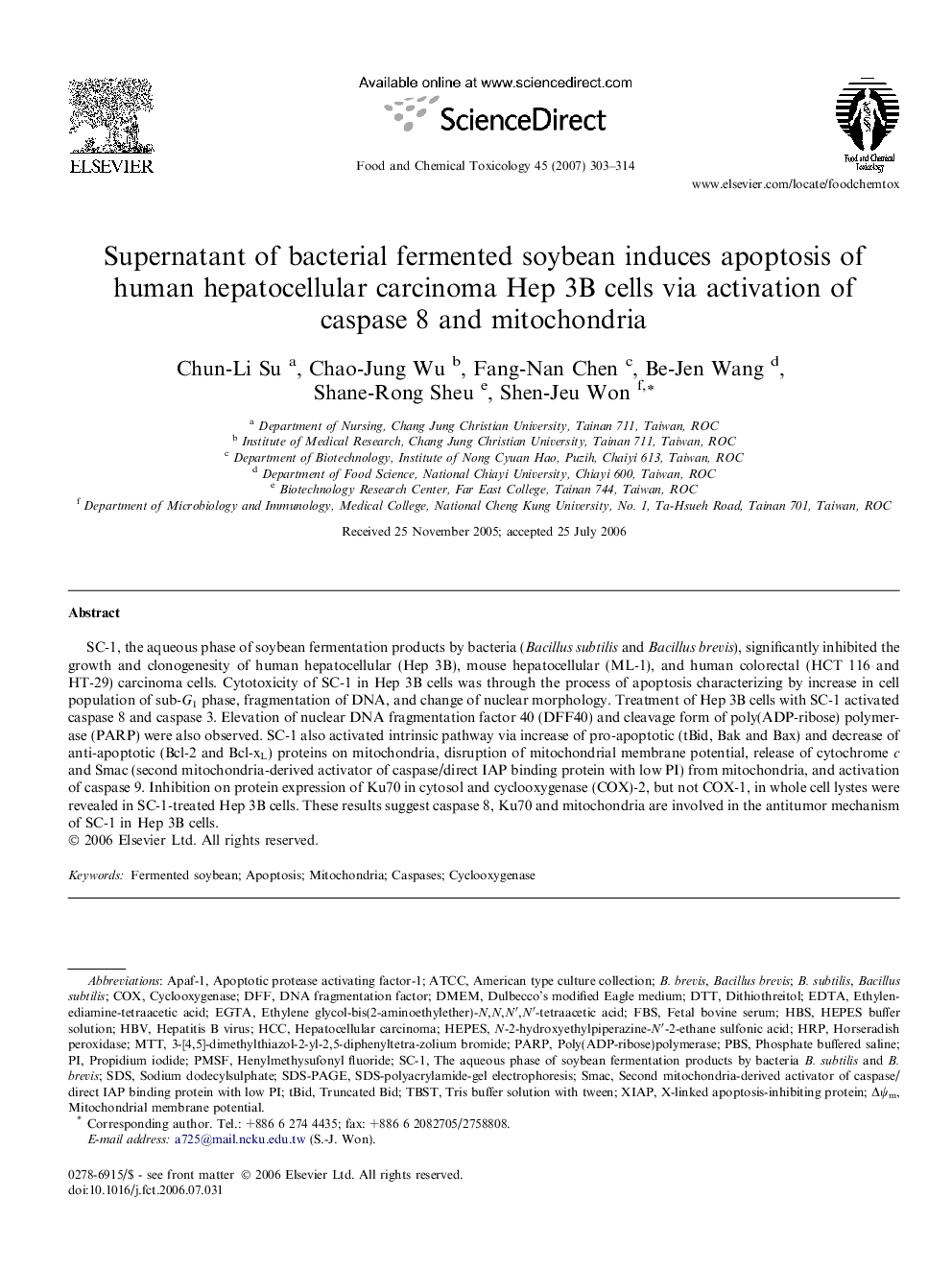| Article ID | Journal | Published Year | Pages | File Type |
|---|---|---|---|---|
| 2586950 | Food and Chemical Toxicology | 2007 | 12 Pages |
SC-1, the aqueous phase of soybean fermentation products by bacteria (Bacillus subtilis and Bacillus brevis), significantly inhibited the growth and clonogenesity of human hepatocellular (Hep 3B), mouse hepatocellular (ML-1), and human colorectal (HCT 116 and HT-29) carcinoma cells. Cytotoxicity of SC-1 in Hep 3B cells was through the process of apoptosis characterizing by increase in cell population of sub-G1 phase, fragmentation of DNA, and change of nuclear morphology. Treatment of Hep 3B cells with SC-1 activated caspase 8 and caspase 3. Elevation of nuclear DNA fragmentation factor 40 (DFF40) and cleavage form of poly(ADP-ribose) polymerase (PARP) were also observed. SC-1 also activated intrinsic pathway via increase of pro-apoptotic (tBid, Bak and Bax) and decrease of anti-apoptotic (Bcl-2 and Bcl-xL) proteins on mitochondria, disruption of mitochondrial membrane potential, release of cytochrome c and Smac (second mitochondria-derived activator of caspase/direct IAP binding protein with low PI) from mitochondria, and activation of caspase 9. Inhibition on protein expression of Ku70 in cytosol and cyclooxygenase (COX)-2, but not COX-1, in whole cell lystes were revealed in SC-1-treated Hep 3B cells. These results suggest caspase 8, Ku70 and mitochondria are involved in the antitumor mechanism of SC-1 in Hep 3B cells.
